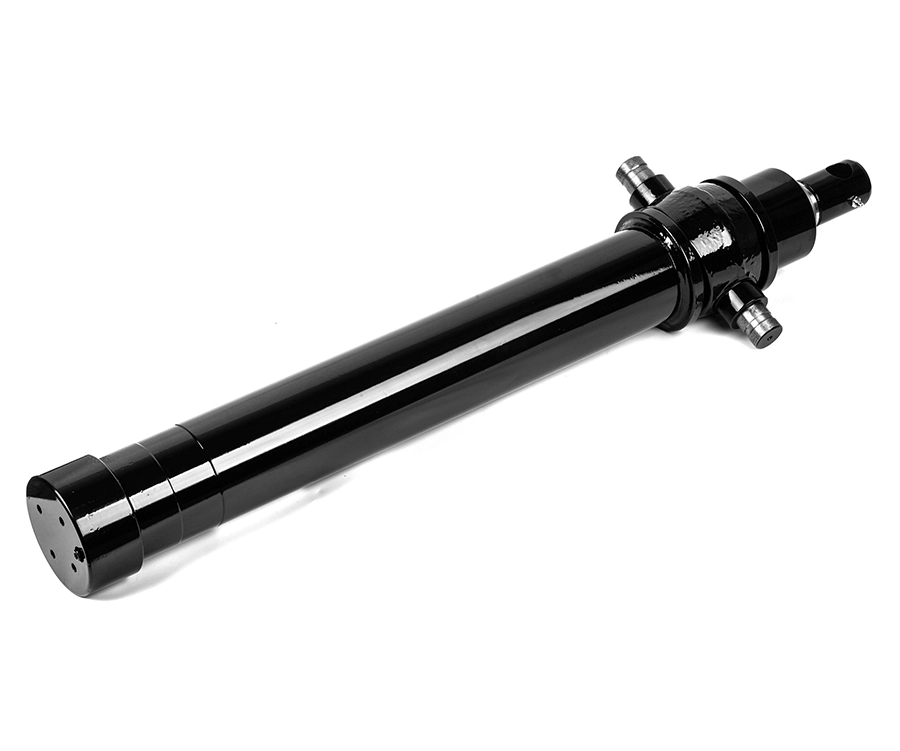


Large size capability: Bore size up to 1000 mm | Stroke up to 15 meters | Up to 7 stages
High-Pressure Performance: Operates at pressure up to 5000 PSI (345 bar) for demanding applications
Multiple design options: Single-acting telescopic cylinders | Double-acting telescopic cylinders | Partially double-acting telescopic cylinders
Integration:
Optional integrated valves and sensors for precision control and monitoring
Cushioning system to minimize end-stroke impact (optional)
Premium Sealing Technology: Equipped with Hallite seals for superior durability and leak prevention
Flexible Mounting Configurations: Multiple mounting options: Pin-to-Pin, Trunnion-to-Pin, Trunnion, Euro-design, and more
HUTCHIN multi-stage telescopic cylinders are engineered for high-performance durability across diverse industries, including:
Dump trucks | Gantry cranes | Garbage compactors | Agricultural trailers | Construction equipment, and more
With decades of experience in hydraulic cylinder and system design and cross-industry applications, we deeply understand the unique challenges of your equipment and operating environment. HUTCHIN delivers tailored solutions to maximize efficiency, reliability, and longevity—ensuring optimal performance under the toughest conditions.
Every HUTCHIN telescopic cylinder undergoes rigorous testing, including:
Pressure testing | Internal leakage inspection | Full functional verification
All units must pass these strict quality checks before delivery.
Warranty Coverage:
Hutchin provides a 2-year warranty on all telescopic cylinders, ensuring long-term reliability and performance.
Standard Lead Time:
60 days from order confirmation to shipment.
Payment Terms:
30% deposit required to initiate production.
70% balance payment due prior to shipment.
For urgent requirements or custom orders, please contact us—we’ll do our best to accommodate your timeline.
HUTCHIN telescopic cylinders are fully interchangeable with top-tier brands such as Parker, Commercial, Hyva, Custom Hoist, Hyco, and Mailhot, ensuring seamless compatibility and easy replacement.
To guarantee superior performance and durability, we equip our cylinders with premium "Hallite" seals, matching the quality standards of industry-leading telescopic cylinder manufacturers.
1000mm bore size– Our heaviest-duty telescopic cylinder for mining equipment applications
15-meter stroke length – Engineered for maximum extension in specialized port machinery operations
These custom-engineered solutions demonstrate our capability to handle the most demanding hydraulic challenges. For unique requirements beyond these dimensions, our engineering team can develop tailored solutions.
HUTCHIN specializes in manufacturing high-quality telescopic hydraulic cylinders to meet diverse industrial needs. Our product range includes:
Single-Acting Telescopic Cylinders
Double-Acting Telescopic Cylinders
Big Bore Telescopic Cylinders
Multi-Stage Telescopic Cylinders (2-stage telescopic cylinders, 3-stage telescopic cylinders, 4-stage telescopic cylinders, 5-stage telescopic cylinders, and beyond)
Custom Cylinder Solutions Available
Can’t find the perfect fit? Our engineering team can design and manufacture fully customized telescopic cylinders tailored to your exact specifications. Simply share your requirements, and we’ll deliver a solution that meets your performance, size, and durability needs.
The telescopic hydraulic cylinder from HUTCHIN is a type of hydraulic cylinder that consists of multiple stages or sections that can extend and retract. Each stage is nested inside the previous one, similar to a telescope, hence the name. The cylinder is powered by hydraulic fluid, which is pressurized by a pump. When the pump is activated, the pressurized fluid enters the cylinder through a control valve, causing the first stage to extend. As the first stage extends, it pushes the second stage, and so on, until the desired length is achieved. To retract the cylinder, the control valve is adjusted to release the pressure, allowing the stages to retract back into the cylinder.
The telescopic hydraulic cylinder, sometimes called multi-stage cylinder, is designed to extend and retract in multiple stages, each with a smaller section that fits inside a larger one. Multi-stage double-acting hydraulic cylinders are specialized hydraulic actuators designed to provide extended stroke lengths while maintaining a compact form factor. They are commonly used in applications where space constraints and the need for long reach are critical, such as in construction equipment, material handling, and industrial machinery.
Multi-Stage Design:
These cylinders consist of multiple nested tubes or stages that extend sequentially. Each stage is a smaller diameter cylinder nested within a larger one.
The telescoping design allows for a much longer stroke compared to single-stage cylinders of the same retracted length.
Double-Acting Operation:
Double-acting cylinders can exert force in both directions—extending and retracting—by applying hydraulic pressure to either side of the piston.
They have two ports for hydraulic fluid—one for extending the piston and another for retracting it.

